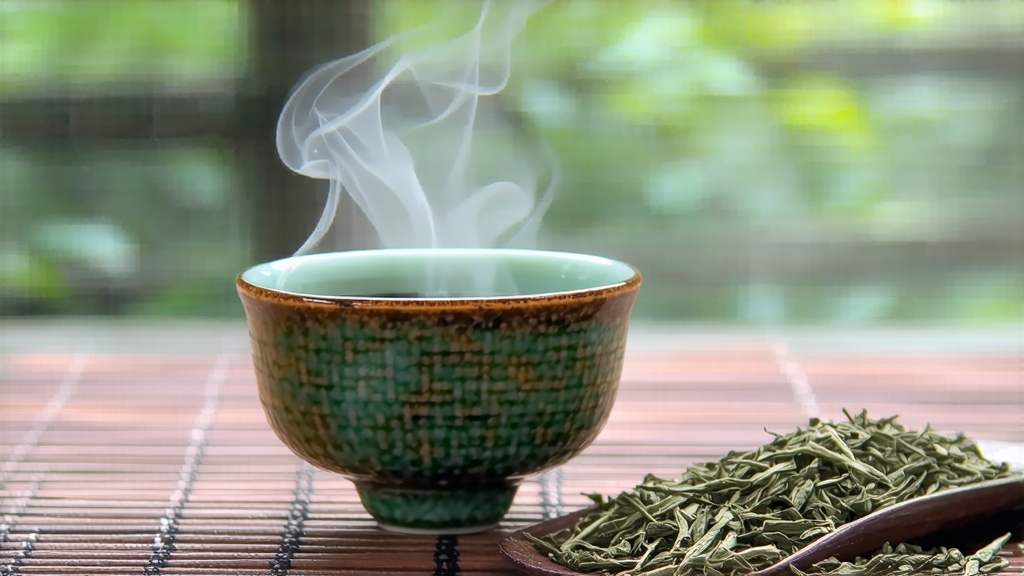
Tucked high on the mist-veiled shoulders of Mt. Meng in Sichuan province, a tea so rare that even emperors rationed it waits for the spring equinox. Meng Ding Huang Ya—“the yellow bud from Meng Summit”—is the least-known yet most aristocratic member of China’s yellow-tea family. While green tea commands global fame and pu-erh fills investment portfolios, Meng Ding Huang Ya survives as a whispered legend among growers, a tea whose very colour is borrowed from mountain clouds and whose flavour carries the calm of Buddhist monks who first pruned the bushes twelve centuries ago.
Historical scrolls kept in the Ya’an county archive record the first plucking in the Tang dynasty (around 724 CE). A local abbot offered three liang of “first spring bud” to the imperial courier; the Emperor Xuanzong, after tasting, decreed that every future spring the entire summit harvest be reserved for the court. For the next 1,100 years the tea travelled 2,000 km by horse and canal, wrapped in oiled paper and yellow silk, arriving in Chang’an and later Beijing as “gong cha” (tribute tea). When the last Qing emperor abdicated in 1912, the mountain gardens fell into neglect; only a handful of Buddhist and Daoist temples kept a few bushes for ritual use. Rediscovery came in 1959 when a team of tea scientists followed antique map coordinates, found 200 ancient mother trees, and convinced the monks to share scions. Today fewer than 300 mu (20 hectares) are under certified cultivation, yielding barely four tonnes a year—less than one day’s output of a single modern green-tea factory.
The micro-climate is the first secret. Mt. Meng rises 1,450 m above the Chengdu plain, trapping the Min River’s humidity under a 280-day blanket of fog. Diffused light slows photosynthesis, forcing the leaf to synthesise more theanine and fewer bitter catechins. Night temperatures drop 10 °C, locking floral volatiles inside the bud. Soil is yellow-brown laterite rich in selenium and zinc, drained by countless rivulets of snowmelt. Even the mountain’s name—“Meng” literally “mist-covered”—is a meteorological forecast rather than poetry.
Growers recognise only one cultivar worthy of the name: the local “Meng Ding Xiao Ye Zhong” (small-leaf landrace). Its dormant buds can survive late frost and yet swell into a perfect spear of one bud and one unfolded leaf, no longer than 2.5 cm and no wider than 0.8 cm. Any larger, and the yellowing step will be uneven; any smaller, and the cup will taste hollow. Selection is merciless: 18,000 buds make one jin (500 g) of finished tea, all picked within the fifteen-day window when the bud’s ciliate tip still shines like fresh corn silk.
The craft sequence follows four immutable characters: kill-green, wrap-yellow, slow-dry, rest-yellow. Each step is timed to the mountain’s own clock.
- Sha Qing (kill-green): buds are tossed by hand into a 160 °C iron wok for 90 seconds, just long enough to rupture surface cells while keeping the inner enzymes alive. The master listens for the “popcorn crackle” that signals moisture dropping from 76 % to 62 %.
- Men Huang (sealed yellowing): the still-warm leaves are immediately wrapped in double layers of yellow cotton cloth, creating an oxygen-poor chamber at 34 °C and 85 % humidity. Every 40 minutes the bundle is opened, fluffed, and re-wrapped—twelve cycles across eight hours. During this aerobic-anaerobic oscillation chlorophyll degrades into pheophytin, polyphenols oxidise partially, and a honey-coloured pigment unique to yellow teas forms. The leaf edges turn ochre while the midrib stays jade, the visual signature known as “gold rim jade back”.
- Mao Huo (primary drying): bundles are unwrapped and baked over charcoal embers at 55 °C, hand-pressed against a bamboo screen to coax remaining moisture out through the cuticle. The goal is 20 % moisture.
- Zuo Se (colour setting): the semi-dry leaf is rested in open wicker trays for 48 hours while mountain breezes carry away grassy notes. A second